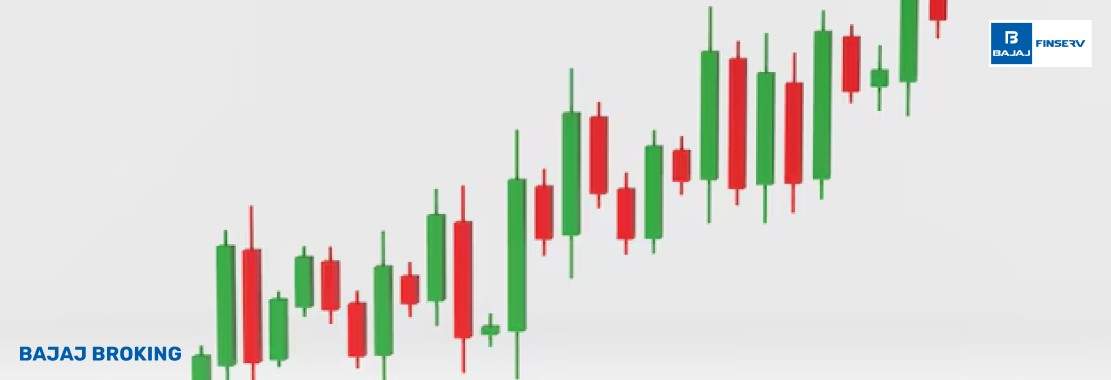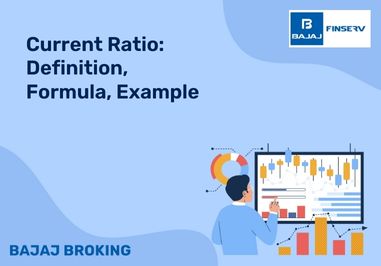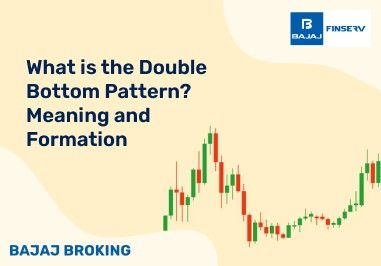The double bottom pattern is a widely recognized bullish reversal pattern in technical analysis. It signifies the potential end of a downtrend and the beginning of an uptrend. This pattern occurs when the price of an asset forms two consecutive lows at nearly the same level, separated by a moderate peak. When the price breaks above the peak (neckline), it confirms the reversal, indicating that buyers are gaining control. Traders use this pattern to identify potential buying opportunities and set price targets based on the height of the formation.
What are Double Bottom patterns?
A double bottom pattern is a bullish reversal chart pattern that signals a potential trend reversal from bearish to bullish. It appears when the price of a security hits a low point twice, with a moderate peak between the two lows, forming a ‘W’ shape. This pattern suggests that selling pressure is weakening and buyers are stepping in, which could lead to an upward price movement.
Key features of a Double Bottom pattern:
- Two distinct low points at nearly the same level.
- A moderate peak (neckline) between the lows.
- Breakout occurs when the price crosses the neckline.
- Confirmation happens with increased trading volume.
What does Double Bottom tell you?
The double bottom pattern is an indication that a downtrend may be ending, and an uptrend could be on the horizon. It represents the shift in momentum from sellers to buyers. Once the price surpasses the neckline, traders may see a rise in prices, confirming the pattern’s effectiveness.
However, not all double bottoms lead to a reversal. It’s important to confirm this pattern using other technical indicators like Relative Strength Index (RSI) or Moving Averages (MA).
Indications of the Double Bottom chart pattern
The double bottom pattern serves as a strong indicator that a prior downtrend is losing momentum, and a potential reversal may be underway. This pattern reflects the shift from bearish sentiment to bullish control as buyers begin to enter the market at a critical support level. A successful breakout above the neckline with increased volume strengthens the credibility of the pattern, signaling a buying opportunity. Traders should also consider other technical indicators, such as moving averages and relative strength index (RSI), to confirm the validity of the reversal.
How to identify a Double Bottom pattern
The double bottom pattern can be identified by recognizing a distinct ‘W’ shape on the price chart. This formation consists of two low points at nearly the same price level, with a moderate peak (neckline) in between. The key aspect to watch for is a breakout above the neckline, which confirms the pattern and signals a bullish reversal. Traders should also consider volume spikes during the breakout phase to validate the strength of the reversal. By combining this pattern with other technical indicators like RSI or MACD, traders can enhance their confidence in making informed trading decisions.
Double Bottom pattern strategies
The double bottom pattern can be leveraged using various trading strategies. One common approach is the breakout entry, where traders enter a long position once the price breaks above the neckline with strong volume. Another method is the pullback strategy, where traders wait for the price to retrace to the neckline after the breakout before entering a trade, ensuring better risk management. Setting a stop-loss below the second bottom helps minimize losses if the pattern fails. Additionally, traders can use a target-setting strategy by measuring the distance from the bottom to the neckline and projecting it upwards to estimate a reasonable price target. Combining these strategies with volume confirmation and other technical indicators can enhance the reliability of trade decisions.
Example of a Double Bottom
Consider a stock trading at Rs. 500, which declines to Rs. 450, bounces back to Rs. 475, then drops again to Rs. 450 before breaking out above Rs. 475. This ‘W’ pattern indicates a potential reversal. Once the price crosses Rs. 475 with higher volume, traders might expect the price to reach around Rs. 500 again, confirming the pattern.
How to trade the Double Bottom chart pattern?
Trading the double bottom pattern involves identifying the pattern early and confirming its validity before entering a trade. The first step is to recognize the ‘W’ formation with two distinct lows and a moderate peak (neckline) in between. Once the price breaks above the neckline with strong volume, it signals a bullish reversal. Traders typically enter a long position at the breakout point and set a stop-loss below the second low to manage risk. To determine a price target, traders measure the distance from the bottom to the neckline and project it upwards from the breakout point. Additionally, waiting for a pullback to the neckline before entering can help optimize trade entry and reduce risk. Volume confirmation and other technical indicators like RSI or MACD can further strengthen the reliability of this pattern in trading decisions.
Double Bottom Pattern vs. Double Top Pattern
Feature
| Double Bottom Pattern
| Double Top Pattern
|
Trend Reversal
| Bullish (Uptrend)
| Bearish (Downtrend)
|
Shape
| ‘W’ Shape
| ‘M’ Shape
|
Occurrence
| After a downtrend
| After an uptrend
|
Signal
| Buying Opportunity
| Selling Opportunity
|
Confirmation
| Breakout above neckline
| Breakdown below neckline
|
Merits and demerits of the Double Bottom candlestick pattern
Merits
| Demerits
|
Provides clear entry & exit points
| False breakouts can occur
|
High reward-to-risk ratio
| Requires volume confirmation
|
Works across different timeframes
| Not always reliable in volatile markets
|
Helps traders identify trend reversals
| May take time to fully form
|
Conclusion
The double bottom pattern is a valuable tool for traders seeking to identify bullish reversals. However, it is crucial to confirm the pattern using technical indicators and volume analysis. By applying proper strategies like stop-loss placement and volume confirmation, traders can maximize their profits and reduce risks.
Ready to trade using the double bottom pattern? Open an account today and start your trading journey with expert insights and tools!
Do you have a trading account app or demat account app?
You can open an account with Bajaj Broking in minutes.
Download the Bajaj Broking app now from Play Store or App Store.
Disclaimer: Investments in the securities market are subject to market risk, read all related documents carefully before investing.
This content is for educational purposes only. Securities quoted are exemplary and not recommendatory.
For All Disclaimers Click Here: https://www.bajajbroking.in/disclaimer












